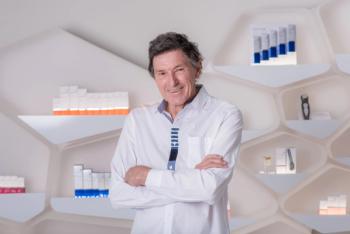
Nonablative technologies strive for improved results
As nonablative rejuvenation techniques advance, physicians are striving for more impressive results in a higher percentage of patients, an expert says.
As nonablative rejuvenation techniques advance, physicians are striving for more impressive results in a higher percentage of patients, an expert says.
A LOOK AT CURRENT TECHNOLOGY
As a practical matter, Dr. Zelickson tells Dermatology Times, "We're still a bit in the dark as to how the science of these (technologies) relates to the clinical effects."
In such a climate, he says it's vital to manage patient expectations based on a thorough knowledge of what the devices can and cannot do.
Some nonablative devices - Fraxel (Reliant Technologies Inc.) and the Titan device (Cutera), for example - work in complementary ways to achieve overall improvement, Dr. Zelickson says.
Currently, he adds, "We also find that using these devices in combination with other types of treatments such as Botox (botulinum toxin, Allergan) and fillers is very helpful in achieving the best outcomes."
Based on research he's done over the years, Dr. Zelickson says that collagen remodeling devices can "cause an ultrastructural change in the dermis that can go quite deep."
And according to a recent study he co-authored, he says, "This type of change is proportional when using multiple passes at lower energies (Kist D et al. Lasers Surg Med. 2006 Feb;38(2):150-154)."
In this study, researchers treated three subjects with the ThermaCool™ (Thermage®) in the preauricular area using one, three (97 J) or five (122 J) passes, pausing briefly between passes to allow tissue cooling. They then took biopsies from control and treated areas for examination immediately post-treatment and at various intervals thereafter. Through ultrastructural examination, researchers found that increasing the number of passes increased the amount of collagen fibril changes observed, and that the changes seen after five passes were similar to those detected after single-pass treatments.
TECHNIQUE PARAMOUNT
Therefore, Dr. Zelickson says that instead of using high energies in a single-pass treatment, which is painful to patients and causes side effects (albeit rarely), lowering the energy level and increasing the number of passes increases both efficacy and patient comfort, while decreasing the potential for side effects.
"This was substantiated by the histologic and ultrastructural research that we did," Dr. Zelickson adds.
Determining the appropriate number of passes with the ThermaCool™ depends on the clinical situation, Dr. Zelickson says, noting that its manufacturer recently introduced a 3 cm tip designed to speed treatment that appears anecdotally to improve patient tolerance.
"It may be more efficacious," he adds, "although that remains to be seen."
Whichever tip one uses, Dr. Zelickson says, "One must titrate the treatment to the patient's pain threshold."
With proper calibration, he explains, "The patient feels a little heat, and then it dissipates, so it's not excruciatingly painful."
He says this approach allowed researchers to cut the proportion of patients who experienced side effects (namely, skin depressions) from less than one percent to less than 0.5 percent.
Newsletter
Like what you’re reading? Subscribe to Dermatology Times for weekly updates on therapies, innovations, and real-world practice tips.


















